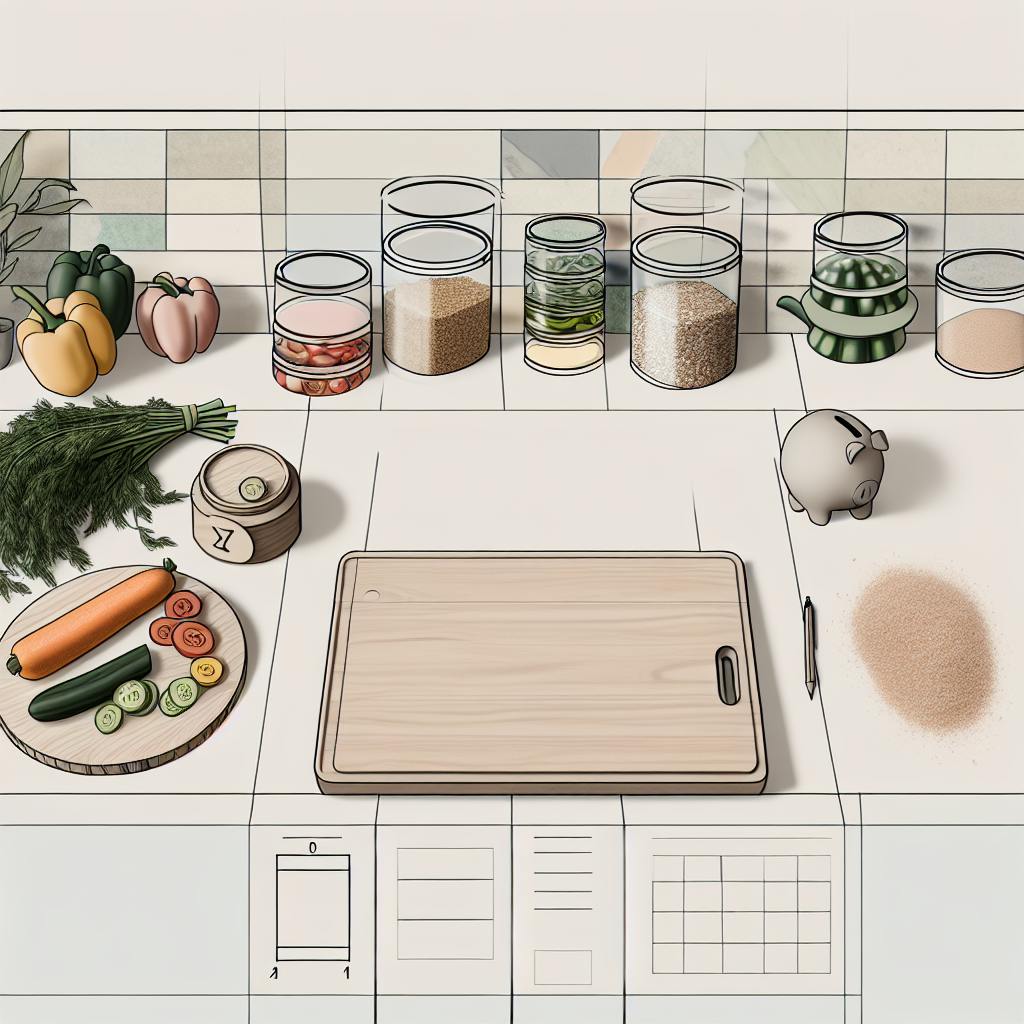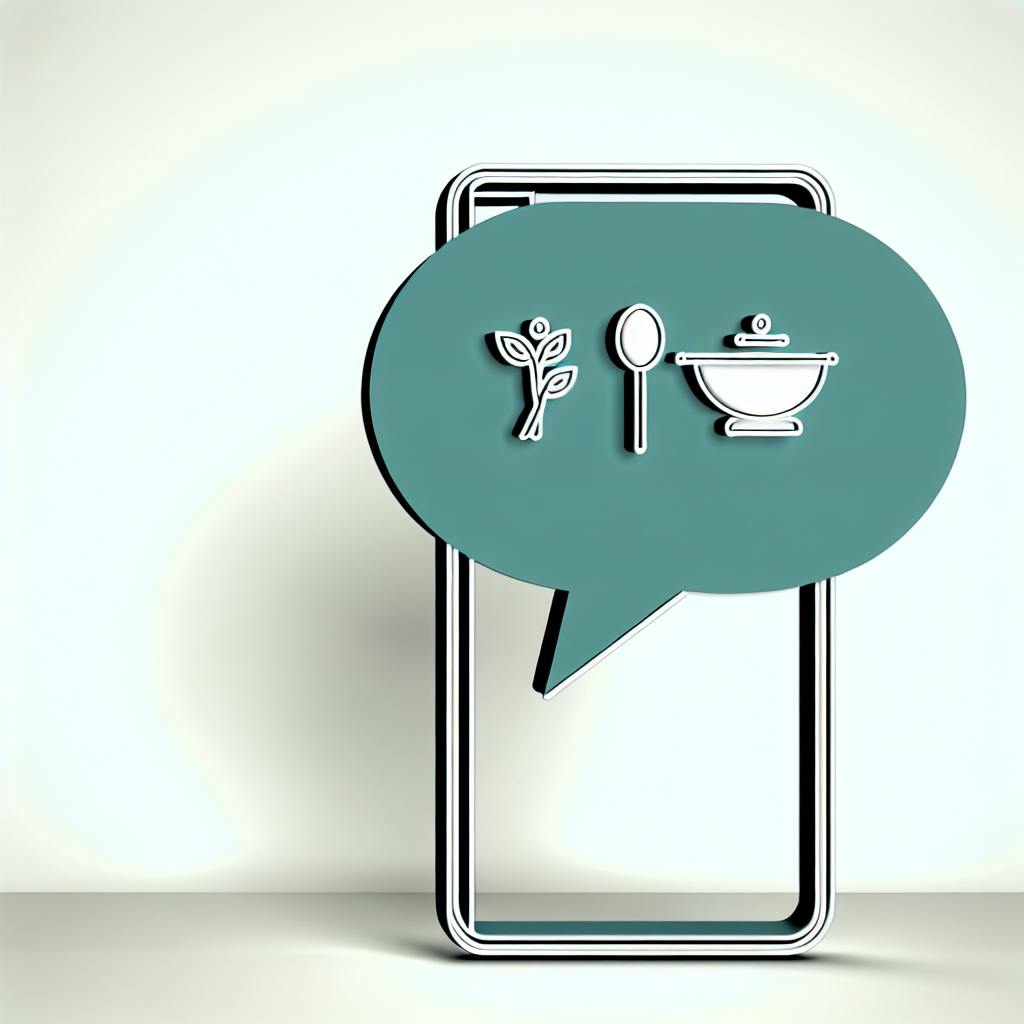Standard costing helps meal prep businesses control expenses, improve efficiency, and boost profits. It involves setting predefined costs for ingredients, labor, and overhead, making financial management easier. Here's a quick summary of what you need to know:
- What is Standard Costing?
Predefined costs for ingredients, labor, and overhead to streamline operations. - Key Benefits:
- Cost Control: Reduce waste and manage expenses.
- Efficiency: Standardized recipes save time.
- Profitability: Keep costs in check to improve margins.
- Planning: Better pricing and financial forecasting.
- How to Implement:
- Set ingredient, labor, and overhead standards.
- Use inventory tools like Eat Fresh Tech to track costs and variances.
- Train staff to follow recipes and manage inventory.
- Daily Operations:
Update cost standards regularly, monitor variances, and take corrective actions to stay profitable.
This process ensures consistent quality, reduces waste, and helps you make data-driven decisions to grow your meal prep business.
Creating Standard Costs
Setting Ingredient Standards
To establish ingredient standards, review supplier pricing and market trends. Collect the 3-month average cost of each ingredient from multiple suppliers. Include factors like seasonal price changes and bulk purchase discounts to calculate realistic costs.
For instance, when determining protein standards, consider both cost and yield:
| Protein Type | Raw Cost/lb | Yield % | Standard Cost/Cooked lb |
|---|---|---|---|
| Chicken Breast | $3.49 | 85% | $4.11 |
| Salmon Fillet | $8.99 | 80% | $11.24 |
| Ground Turkey | $4.29 | 90% | $4.77 |
Keep these standards updated in your inventory management system. Reassess them every quarter or when there are major market shifts. Tools like Eat Fresh Tech can simplify ingredient cost updates and recipe adjustments. Once your ingredient standards are in place, focus on recipe standardization to maintain consistency.
Building Recipe Standards
Create standardized recipes with precise measurements and clear instructions. Each recipe should include:
- Exact ingredient quantities
- Step-by-step preparation methods
- Expected yield
- Portion sizes
- Cooking times and temperatures
- Any special handling requirements
"Cuts my build time on new menu items by 90%. Makes ingredient updates and yield changes easy instead of something I dread", says Nathan from E2M Kitchen.
With standardized recipes, you'll be able to calculate meal costs more effectively.
Meal Cost Calculations
To calculate meal costs, combine the following components:
- Direct ingredients: Add the standard costs of all recipe components based on portion sizes.
- Packaging materials: Account for containers, labels, and related items.
- Direct labor: Calculate using the standard preparation time.
- Overhead allocation: Include utilities, equipment, and facility costs.
Use a system that tracks both standard and actual costs to spot discrepancies and make necessary adjustments.
Here's a breakdown of cost components and how to manage them:
| Cost Component | Standard Calculation Method | Update Frequency |
|---|---|---|
| Raw Ingredients | 3-month average + 5% buffer | Quarterly |
| Direct Labor | Time study + 15% allowance | Semi-annually |
| Packaging | Bulk purchase price + freight | Per contract term |
| Overhead | Previous quarter actuals | Quarterly |
How To Start & Scale A Meal Prep Business
Daily Operations Guide
Daily operations, such as tracking inventory and ensuring staff follow procedures, are key to maintaining effective standard costing.
Inventory System Setup
Set up an inventory system using tools like Eat Fresh Tech, which offers features designed specifically for meal prep businesses.
Key Components:
| Component | Purpose | Suggested Update Frequency |
|---|---|---|
| Recipe Database | Manage standardized recipes and portions | Weekly |
| Ingredient Catalog | Monitor ingredient costs and inventory | Daily |
| Production Schedule | Plan preparation quantities and timing | Weekly |
| Cost Variance Reports | Compare actual vs. standard costs | Daily |
Once the system is in place, make sure to train your team on how to use it effectively.
Staff Training Methods
Staff training is crucial for maintaining consistency. Focus on teaching them to:
- Follow Recipes: Stick to standardized recipes without deviations.
- Track Inventory: Record ingredient usage and waste accurately.
- Use the System: Get comfortable with the inventory management platform, like Eat Fresh Tech.
"We couldn't be more pleased with Eat Fresh Tech. The software is extremely user friendly and we love how customizable everything is." - Alexis, Alchemy Meal Prep
With well-trained staff, you'll also need to keep your cost standards up-to-date to reflect market changes.
Cost Standard Updates
Regularly review and update cost standards to align with market trends. Here's a suggested schedule:
| Ingredient Type | Update Frequency | Adjustment Trigger |
|---|---|---|
| Fresh Produce | Weekly | ±5% price change |
| Proteins | Bi-weekly | ±3% price change |
| Dry Goods | Monthly | ±7% price change |
| Packaging | Quarterly | Contract renewal |
Track cost variances regularly and adjust standards if discrepancies exceed acceptable limits. Automated systems can simplify this process, ensuring accurate cost data across all menu items.
"Cuts my build time on new menu items by 90%. Makes ingredient updates and yield changes easy instead of something I dread." - Nathan, E2M Kitchen
sbb-itb-3666cb4
Cost Variance Analysis
Using updated cost standards, you can analyze variances to identify inefficiencies and areas for cost control.
Common Cost Variances
In meal preparation, three main variances often impact profitability:
| Variance Type | Description | Common Causes |
|---|---|---|
| Price Variance | Difference between standard and actual ingredient costs | Market price changes, supplier adjustments, or seasonal trends |
| Quantity Variance | Deviations from standard recipe portions | Over-portioning, waste, or spoilage |
| Mix Variance | Changes in ingredient combinations | Substitutions or limited ingredient availability |
For instance, if your standard cost for chicken breast is $3.50 per pound but you're paying $4.00, the $0.50 difference is a negative price variance that needs attention.
Variance Calculations
To track cost differences, use these simple formulas:
- Price Variance = (Standard Price – Actual Price) × Actual Quantity
- Quantity Variance = (Standard Quantity – Actual Quantity) × Standard Price
- Total Variance = Price Variance + Quantity Variance
These calculations reveal where costs deviate from expectations. Tools like Eat Fresh Tech can automate variance tracking, providing daily reports that flag discrepancies in real time.
Improvement Actions
When variances exceed acceptable levels, take focused steps to address them. Here are some actions based on variance type:
| Variance Type | Action |
|---|---|
| Price | Negotiate better deals with suppliers or find alternative sources |
| Quantity | Train staff on proper portioning to reduce waste and maintain consistency |
| Mix | Review and refine recipes to account for ingredient changes or substitutions |
To stay on top of variances:
- Review daily variance reports
- Record major deviations for analysis
- Set clear thresholds for acceptable variances
- Regularly update cost standards and provide staff training
Business Planning with Standard Costs
Menu Price Setting
To determine the price of each meal, start by calculating the total standard cost. This includes the costs of direct materials, labor, overhead, and packaging. Once you have this figure, add a profit margin, apply a markup, and compare your price with competitors. Adjust as needed to fit your market position.
| Cost Component | Calculation Basis |
|---|---|
| Direct Materials | Ingredient costs per portion |
| Direct Labor | Prep time × labor rate |
| Overhead | Allocated fixed costs per meal |
| Packaging | Container and labeling costs |
These pricing steps provide a foundation for managing costs effectively across your business.
Cost Reduction Methods
To reduce costs, analyze where actual expenses consistently exceed standard costs. Focus your efforts on specific areas:
| Focus Area | Cost Reduction Strategy |
|---|---|
| Ingredient Costs | Negotiate volume discounts with suppliers |
| Production Efficiency | Streamline kitchen workflows and batch sizes |
| Waste Management | Implement portion control standards |
| Labor Utilization | Schedule staff based on production requirements |
Tools like Eat Fresh Tech can simplify these tasks by automating menu planning, updating ingredient costs, and calculating yields. This automation can save both time and money.
Financial Planning
Accurate pricing and cost control set the stage for strong financial planning. Use standard costs and historical data to forecast revenue, ingredient needs, labor, and overhead. Compare actual performance to these benchmarks regularly to make timely adjustments.
Here's how standard costs can guide your financial planning:
- Forecast Revenue: Use past order patterns to estimate monthly income.
- Plan Ingredients: Base purchase quantities on standard recipes.
- Estimate Labor: Use standard production times to schedule staff.
- Account for Seasonal Changes: Adjust for fluctuations in ingredient and labor costs.
Conclusion
Main Points Review
Standard costing simplifies expense tracking and improves profitability by establishing clear guidelines for ingredients, recipes, and processes. It helps pinpoint cost differences quickly, allowing businesses to take corrective action and protect their profit margins.
Here's how it helps:
| Benefit | Impact |
|---|---|
| Cost Control | Monitors ingredient and labor cost differences |
| Menu Planning | Supports data-based pricing decisions |
| Inventory Management | Reduces waste and improves purchasing efficiency |
| Financial Forecasting | Leads to more accurate budgeting |
Software Solutions
Modern software tools make standard costing easier by automating updates and tracking cost variations in real time. Eat Fresh Tech's platform is a great example of how technology can simplify this process for meal prep businesses.
"Cuts my build time on new menu items by 90%. Makes ingredient updates and yield changes easy instead of something I dread." - Nathan, E2M Kitchen
John's Fit Meals has seen a drop in the time spent creating food labels, while automated updates keep their website running smoothly. Businesses like 850 Prep'd report that automated delivery exports have significantly reduced manual data entry.
Some standout features include real-time ingredient tracking, automated recipe management, allergen filtering, and streamlined order handling.
Consistent use and regular updates are key to maintaining accurate cost standards, helping businesses stay focused on growth.


